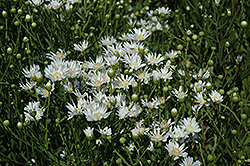Fri & Sat 8am - 8pm
Sun 8am - 7pm
Anytown, USA 12345
fax: 261.787.0463
e-mail: info@successgc.com


Plant Finder

Height: 24 inches
Spread: 18 inches
Sunlight:
![]()
![]()
Hardiness Zone: 3a
Other Names: Aster ptarmicoides, Upland White Aster
Description:
A mounded, bushy variety, perfect for adding color to fall gardens; snow white daisy-like flowers with pale yellow centers are featured on narrow, green foliage; easy to grow, requiring little to no maintenance; drought tolerant once established
Ornamental Features
White Aster has masses of beautiful white daisy flowers with yellow eyes at the ends of the stems from late summer to early fall, which are most effective when planted in groupings. The flowers are excellent for cutting. Its narrow leaves remain green in color throughout the season.
Landscape Attributes
White Aster is an herbaceous perennial with a mounded form. Its relatively fine texture sets it apart from other garden plants with less refined foliage.
This is a relatively low maintenance plant, and is best cleaned up in early spring before it resumes active growth for the season. It is a good choice for attracting butterflies to your yard, but is not particularly attractive to deer who tend to leave it alone in favor of tastier treats. It has no significant negative characteristics.
White Aster is recommended for the following landscape applications;
- Mass Planting
- General Garden Use
- Naturalizing And Woodland Gardens
Planting & Growing
White Aster will grow to be about 24 inches tall at maturity, with a spread of 18 inches. Its foliage tends to remain dense right to the ground, not requiring facer plants in front. It grows at a medium rate, and under ideal conditions can be expected to live for approximately 6 years. As an herbaceous perennial, this plant will usually die back to the crown each winter, and will regrow from the base each spring. Be careful not to disturb the crown in late winter when it may not be readily seen!
This plant does best in full sun to partial shade. It prefers to grow in average to dry locations, and dislikes excessive moisture. It is considered to be drought-tolerant, and thus makes an ideal choice for a low-water garden or xeriscape application. It is not particular as to soil pH, but grows best in sandy soils. It is highly tolerant of urban pollution and will even thrive in inner city environments. This species is native to parts of North America.
